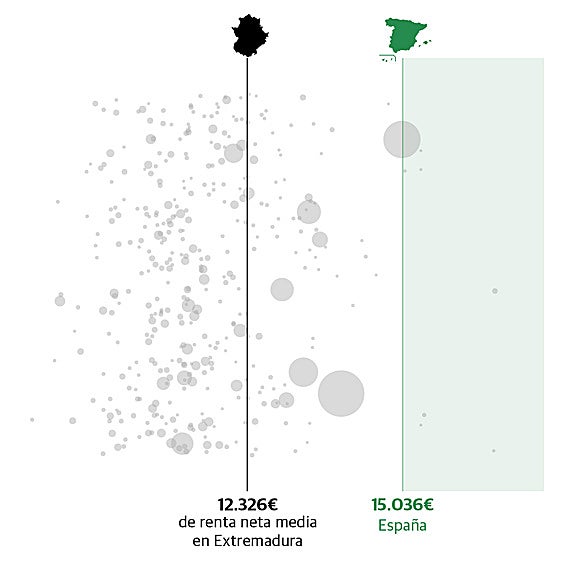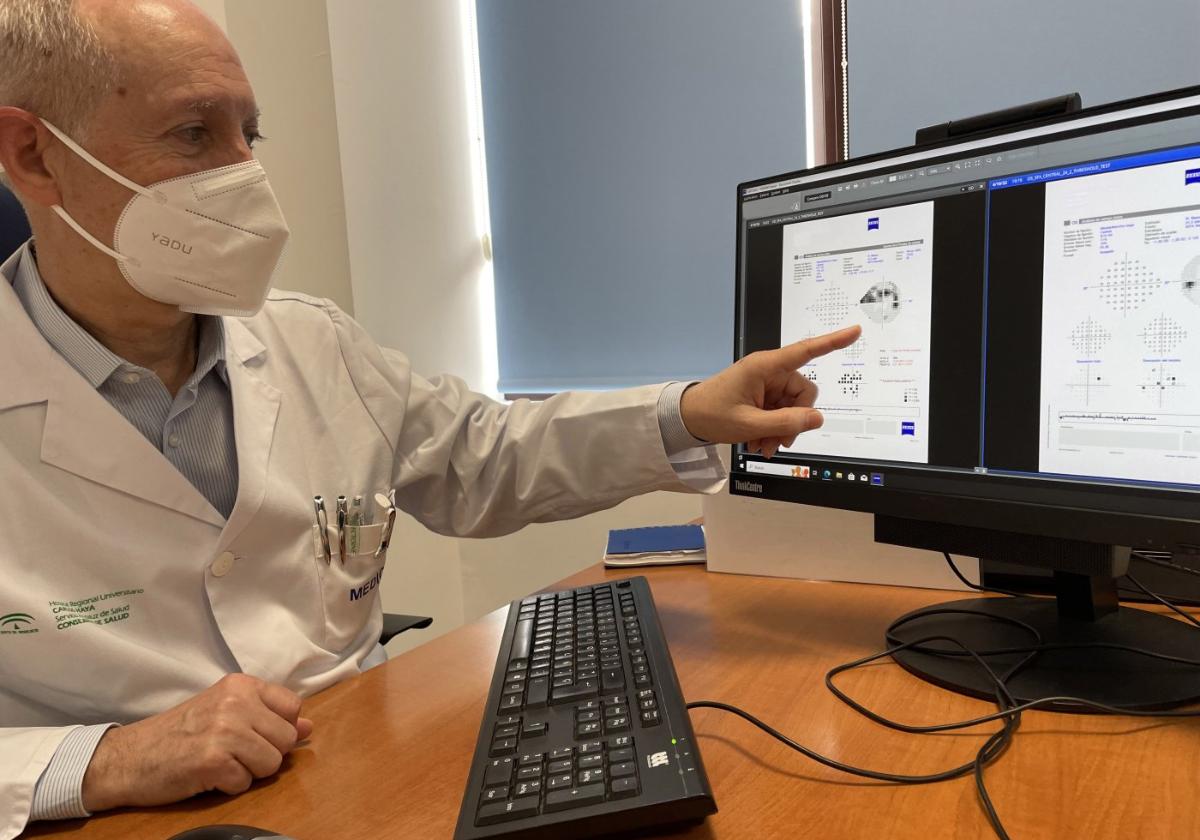'Everyone over 40 should take a glaucoma test'
Unfortunately there is no cure, but quality of life varies depending on how soon treatment starts
Iván Gelibter
Malaga
Friday, 15 September 2023, 16:03
Miguel Ángel Almendro is an ophthalmologist at Malaga's Regional Hospital specialising in the treatment of glaucoma, a disease that affects a very high percentage of the population. He is an expert in this field, fighting against an ailment known as 'silent blindness', for glaucoma is irreversible and, in the first stage, also asymptomatic. That is why he insists on the need for prevention through periodic check-ups. Meanwhile research is ongoing to improve treatment options in the future.
How common is glaucoma?
According to data issued by the Spanish Glaucoma Society, 3% of Spain's population suffers from it - some one million up to 1.5m people have the disease. The data is greatly influenced by population age. So, for those in their forties and fifties, the tally is approximately 2/2.5%, but this increases with age. From the ages of 60+ and 70+, the tally reaches approximately 5%. These are the figures we have to play with here in Spain. Malaga has similar levels to Madrid, Barcelona and the other big cities.
What is the current treatment available for glaucoma?
The problem with glaucoma is that it is a silent, creeping blindness. Initially, during the first stage and the first years of the disease, it is completely asymptomatic. So about half the people with glaucoma don't even know they have it. All too often, by the time they come to our attention, they are already in the moderate or advanced stages. Treatment starts with eye drops that try to reduce intraocular pressure because, despite all the risk factors that glaucoma has, we can only tackle one of them. It is the only factor that we can modify and, by lowering the pressure inside the eye, we can try to slow the disease's progress as much as possible.
As I understand it, it's an incurable disease
Indeed. There are cases where, either through medical or surgical treatment, one might say that we manage to halt the disease or at least slow it down. The key thing is that the rate of progression is as slow as possible so that it doesn't impact on the patient's quality of life and that, as they age, they are not rendered incapable of carrying out the most basic tasks in their daily lives. We must also be aware that there are three types of glaucoma, and that their evolution depends on whether they are of the moderate or more severe type.
Should we be checking for it sooner so it is not just spotted at a more advanced stage? I don't know if being asymptomatic makes it also undetectable.
It is detectable. Moreover, it is a disease where prevention is one of the fundamental aspects of treatment, so it is recommended that, from the age of 40 or 45, everyone should visit an ophthalmologist to have their eyesight checked along with the corresponding tests for their eyes. In this way glaucoma can be detected when still asymptomatic and treatment can start up as soon as possible.
And if it is detected in that asymptomatic phase, I understand that there is a probability that the disease will not develop as much. Or is it going to develop anyway?
This is really a race against time. Our end game is to try to stop or slow down the rate of progression as much as possible, but obviously today we have tests that are capable of detecting the disease when it has not yet caused problems for a patient's vision. If we start treatment at this point, we can extend the patient's visual quality for many years. This in the end is a chronic and progressive optic neuropathy, it's also irreversible. That is, any damage that occurs on the fibres of the optic nerve cannot be undone so, when we detect it, the only thing we can do is stop it in its tracks. So I reiterate that the damage has been done and the visual loss that has already occurred cannot be recovered. Hence the importance of diagnosis and treatment as soon as possible.
Do you get the feeling that people in general worry about glaucoma? Are they seeing a specialist sooner?
Frankly, no. People are still not fully in the know. First because it is an asymptomatic disease, but also because they are a little in fear of finding out that they have glaucoma. They feel a lurch in the stomach because they know from family, friends and close associates that glaucoma, having no cure and being irreversible, is somewhat serious. So they have fewer check-ups than they really should have. Yes, it is true that we are making some progress, but obviously there is still a need for people to get more informed and go to the eye clinic to undergo the appropriate check-ups.
Can we profile the type of person more prone to developing glaucoma? Are there risk factors?
There are several risk factors that make people suffering from any of them a more likely candidate to contract the disease. Firstly there is age, as I mentioned earlier. As the years progress the prevalence increases, as in almost all diseases. The second most important risk factor is having high intraocular pressure, a symptom that can be spotted at the optician's. The third, the hereditary factor. Indeed, having a close relative with glaucoma greatly increases the possibility of developing it too. The fourth factor, degenerative myopia. Eyes with this condition are stronger candidates for suffering from glaucoma. Finally, there is a greater risk for those people with minor or major cardiac or circulatory disorders not under control. To be clear, hypertension, high cholesterol, diabetes... all of these somehow decrease blood flow to the optic nerve. So if the eye is already a little damaged, this adds additional damage. These are the main risk factors. Those who have more than one condition should visit their ophthalmologist periodically.
Finally, what about research? Will we see a cure in the future?
Regarding all research related to glaucoma, it boils down to two avenues of study. The first is the one to do with treatment, primarily via eye drops. There are multiple trials into these and one never knows when there will be a medical breakthrough. But it is complicated because it is not the same to take a patient with early glaucoma, who responds better to the meds, than when their sight has already deteriorated a lot. And regarding the studies made in surgery, in recent years it has evolved enormously as various drainage devices have emerged to reduce intraocular pressure and others that release aqueous humour from the lens of the eyeball. Fortunately, in our work at the technology unit of the Civil Hospital, we have all the equipment and are doing quite well in this regard.



